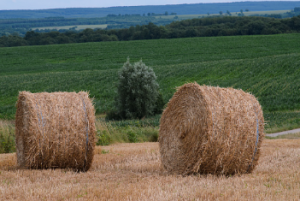A simple roll of baling twine can save money and time when making and fixing things around the home or on the farm. For example, you can use baling twine instead of belts as a makeshift lead rein or dog leash by tying the ends to a dog’s headcollar or collar. It also works well as a simple halter or lead rope. You can even braid the twine to create a hammock. Baling twine can also be used to secure tarps and other things.
When choosing the right baling twine, you’ll need to consider the baling machine and tools you use. You’ll need to choose twine with the right weight and dimensions, teter weight ratio, or weight per foot of footage. You’ll also want to find one with lower weight and higher elongation, which is essential when working with pressed fodder. If you’re using twine with a heavy-duty baling machine, you may want to purchase a stronger twine.
 If you’re a farmer, there are two types of baling twine you can choose from polypropylene and sisal. Sisal is the traditional twine, but polypropylene is an excellent option because it’s biodegradable and easy to spin. In addition, polypropylene is more cost-effective than sisal but has similar breaking strength. You can even dye the twine to match the colour of the hay.
If you’re a farmer, there are two types of baling twine you can choose from polypropylene and sisal. Sisal is the traditional twine, but polypropylene is an excellent option because it’s biodegradable and easy to spin. In addition, polypropylene is more cost-effective than sisal but has similar breaking strength. You can even dye the twine to match the colour of the hay.
The company at https://silagewrap.com.au baling twine makes several types of baling twine. Many experienced farmers have tried these baling twines and can better understand which one will work for you. Another type is Black Label Twine, which is recycled post-industrial material. These twines are great for farmers who want to recycle their waste and reduce their carbon footprint.
If you’re a farmer, you should always consider recycling your old baling twine. Depending on your preferences, you can use it for the same purpose or reuse it in other ways. Either way, you’ll be doing your part to heal the planet. All you have to do is follow some simple steps. Just remember to clean and dry the twine well before you begin baling. You’ll be glad you did!
The twine is used to tie together different types of balers, such as waste materials, recyclables, and newspapers. You can choose a variety of colours and strengths to suit your needs. Just make sure that you purchase UV stabilized baling twine. In addition, you should also consider its easy-to-mark and durable properties. You can choose baling twine according to your needs and your budget. It will save you money and make your work easier.
The twine you use for baling hay is sisal or synthetic fibre. Both types of twine are strong, lightweight, and durable. They’re also biodegradable. Sisal twine is also environmentally friendly and is a good option for lightweight bales. Just remember to buy a new one every couple of years. That way, you’ll be sure to be able to use it for a long time.
Baling twine is the material of choice for constructing straw and hay bales. Farmers also use baling twine to make baskets for their produce. It also serves as a valuable tool to bind boxes and vegetables. It is available in different strengths and colours. Though it may not be the most attractive material, baling twine has many other uses. Below are just a few examples of its common uses and how you can use it.
Solar-degradable twine is one option that combines the advantages of both synthetic and sisal twine. It has a much longer shelf life before it decomposes. While the twine does cost a little more than 50 cents per bale, the time saved wrapping each bale will more than offset the higher cost. It can also be recycled for reuse. It would be best if you considered a solar-degradable baling twine.
